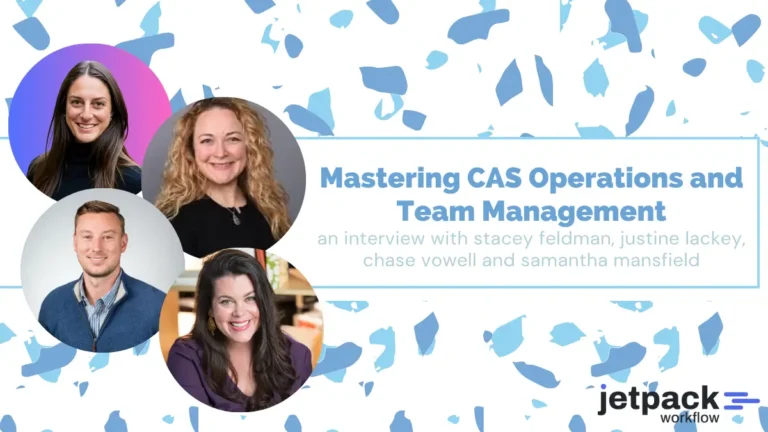Building Successful CAS Practices: Insights from Industry Experts

In this episode, we kick off an engaging panel discussion featuring industry experts Debra Duffer, Amy Vetter and Deneen Dias. Deb shares her impressive journey in public accounting, highlighting her success at BDO where she grew the technology team and outsourcing practice significantly. Now at Woodard Consulting, she assists top firms in developing their Client Accounting Services (CAS) practices using the Woodard methodology. Amy, a CPA with a background in Big Four auditing, brings her extensive experience to the table as well. The conversation dives into the vibrant community of accounting professionals eager to learn and share insights, setting the stage for an interactive and dynamic discussion. Tune in for valuable insights and the energy that makes this community thrive!
Empowering CAS Practices Through Education
In the rapidly evolving landscape of accounting, the emergence of Client Accounting Services (CAS) has transformed the way firms operate and deliver value to their clients. As highlighted in a recent podcast featuring industry experts Debra Duffer, Amy Vetter, and Deneen Dias, education plays a pivotal role in empowering CAS practices and ensuring that professionals are equipped to meet the demands of a technology-driven world.
The podcast underscores the significance of education in building robust CAS practices. Debra Duffer, with nearly two decades of experience in public accounting, emphasizes her commitment to helping firms grow their CAS capabilities using the Woodard methodology. This approach focuses on the “seven ideals,” which guide firms in developing their practices effectively. Duffer’s journey from leading a successful technology team at BDO to consulting with top firms illustrates the importance of strategic education in scaling CAS practices. By providing firms with a structured framework, Duffer empowers them to navigate the complexities of the accounting landscape and foster sustainable growth.
Amy Vetter’s insights further reinforce the need for education in the CAS domain. Having transitioned from traditional accounting roles to consulting, Vetter highlights the evolution of CAS from outsourced bookkeeping to a more sophisticated service model. Her establishment of the B3 Method Institute, which offers advisory services, practice roadmap courses, and coaching, exemplifies how education can bridge the gap between traditional practices and modern entrepreneurial approaches. Vetter’s focus on work-life balance and the flexibility of CAS practices resonates with the entrepreneurial spirit of many professionals in the field. By educating practitioners on how to create their own unique practices, Vetter empowers them to leverage their expertise and adapt to changing market demands.
Deneen Dias’s experience in helping firms embrace technology and AI further illustrates the transformative power of education. As the founder of Infinite Ties, Deneen recognizes the necessity of upskilling talent within firms to keep pace with technological advancements. Her work in facilitating workshops and training programs for thousands of firms demonstrates a proactive approach to education, emphasizing the importance of preparing teams for the future. By focusing on the needs of non-CPA professionals who are integral to the CAS ecosystem, Deneen addresses a critical gap in traditional accounting education. This inclusive approach not only enhances the skills of those performing essential tasks but also ensures that firms can adapt to automation and technological changes without losing valuable human capital.
The podcast highlights a common theme: the need for continuous education and training to empower CAS practices. As technology reshapes the accounting landscape, firms must prioritize the development of their teams. This involves not only equipping professionals with technical skills but also fostering an entrepreneurial mindset that encourages innovation and adaptability. By investing in education, firms can create a culture of learning that empowers individuals to thrive in their roles and contribute to the overall success of the organization.
In conclusion, the podcast featuring Debra Duffer, Amy Vetter, and Deneen Dias serves as a powerful reminder of the critical role education plays in empowering CAS practices. As the accounting profession continues to evolve, firms that prioritize education will be better positioned to navigate challenges, leverage technology, and deliver exceptional value to their clients. By fostering a culture of continuous learning and development, firms can ensure that their teams are equipped to succeed in an ever-changing landscape, ultimately driving growth and innovation in the CAS space.
Emphasizing Storytelling and Client-Centric Language in CAS Services
When engaging with potential clients about Client Accounting Services (CAS), it is essential to prioritize storytelling and client-centric language to effectively convey the value of these services. The panelists in the podcast episode highlighted several key strategies to achieve this.
1. Avoid Industry Jargon
Amy Vetter emphasized the importance of steering clear of internal terminology that may not resonate with clients. Terms like “CAS” can confuse business owners unfamiliar with accounting jargon. Instead, it is crucial to communicate in terms that reflect clients’ daily operations and pain points. For example, rather than stating, “we offer CAS,” you might say, “we help you manage your cash flow and streamline your bookkeeping.” This approach makes the services more relatable and understandable.
2. Use Real-Life Examples
Debra Duffer underscored the power of storytelling by sharing real-life examples of how CAS has positively impacted clients. By narrating specific instances where clients faced challenges—such as struggling to keep up with bill payments—and how the firm alleviated those issues, potential clients can better grasp the tangible benefits of the services offered. Stories create emotional connections and help clients visualize the outcomes they can expect.
3. Focus on Value and Outcomes
Both Deb and Amy stressed the importance of articulating the value that CAS brings to clients. Instead of detailing the processes involved, the conversation should center around the results and benefits clients will experience. For instance, rather than explaining how bookkeeping is done, firms should communicate how accurate financial data can lead to better decision-making and, ultimately, business growth. This client-centric approach shifts the focus from what the firm does to how it can help the client succeed.
4. Highlight Problem-Solving Capabilities
Deneen Dias pointed out that clients often approach firms with specific problems, such as messy books or a lack of understanding of their financial data. By framing CAS services as solutions to these problems, firms can better align their offerings with client needs. For example, saying, “We can help you clean up your books and provide insights that will help you grow your business,” directly addresses the client’s pain points and positions the firm as a valuable partner in their success.
5. Create a Culture of Innovation and Feedback
Encouraging team members to share their experiences and insights can enhance storytelling. As Amy mentioned, fostering a culture where staff can discuss client interactions and the challenges they face allows for the development of compelling narratives that can be used in marketing and client discussions. This not only refines the messaging but also empowers employees to take ownership of their roles in client success.
Conclusion
In summary, effectively communicating the value of CAS services requires a shift towards storytelling and client-centric language. By avoiding jargon, using real-life examples, focusing on outcomes, highlighting problem-solving capabilities, and fostering a culture of innovation, firms can create a compelling narrative that resonates with potential clients. This approach clarifies the services offered and builds trust, establishing a strong connection with clients that ultimately leads to better client acquisition and retention.
Encouraging Team Involvement in Identifying and Testing New Technology Solutions
In the rapidly evolving landscape of accounting and client advisory services (CAS), it is crucial for firms to cultivate a culture of innovation that actively involves team members in identifying and testing new technology solutions. This approach not only enhances efficiency but also improves client service. Here are some key strategies based on insights from the podcast episode:
1. Empower Team Members to Identify Pain Points
Encouraging team involvement begins with empowering employees to recognize areas where technology can alleviate their workload. As Deneen mentioned, her co-founder at BDO challenged their team to identify tasks that consumed excessive time and seek out technology that could automate those processes. By involving team members in this way, firms can tap into their firsthand experiences and insights, leading to more effective technology adoption.
2. Create a Structured Innovation Process
Establishing a structured process for innovation can help teams systematically explore new tools. Amy shared her experience of implementing a “coffee talk” initiative, where team members paired up to work on specific problems, fostering collaboration and creativity. This not only encourages team members to think critically about their work but also allows them to present their findings and solutions to the larger team.
3. Incentivize Technology Adoption
Incentivizing team members to bring in new technology can significantly enhance engagement. Deneen highlighted a strategy where team members were rewarded for identifying and implementing technology that saved time and improved margins. This not only motivates employees to seek out innovative solutions but also aligns their interests with the firm’s goals.
4. Test New Tools with Friendly Clients
When exploring new technology, it is beneficial to test tools with clients who are open to experimentation. Amy suggested selecting friendly clients to pilot new solutions, ensuring that the team can gather feedback on both the tool’s functionality and the client experience. This collaborative approach helps refine the technology before a broader rollout.
5. Foster a Culture of Learning from Failures
Creating a culture where team members feel safe to experiment and learn from failures is essential. Deb emphasized that learning from failures is often more valuable than success. By encouraging a mindset that views setbacks as learning opportunities, firms can cultivate resilience and adaptability among their teams.
6. Encourage Continuous Learning and Curiosity
To stay ahead in the technology landscape, firms should promote continuous learning. Deb mentioned her goal of learning three new pieces of technology each month, which keeps her informed and relevant. Encouraging team members to pursue their interests in technology can lead to innovative solutions that benefit the entire firm.
7. Integrate Client Feedback into Technology Decisions
Finally, it is important to consider client feedback when evaluating new technology. As Amy pointed out, understanding how a tool feels to both staff and clients is crucial for successful implementation. By involving clients in the testing process, firms can ensure that the technology meets internal needs and enhances the overall client experience.
Conclusion
By actively involving team members in the identification and testing of new technology solutions, firms can create a culture of innovation that drives efficiency and improves client service. Empowering employees, incentivizing participation, and fostering a learning environment are key strategies that can lead to successful technology adoption and, ultimately, a more effective CAS practice.
Upselling Existing Clients by Recognizing Their Evolving Needs
In the podcast episode, the panelists discussed the importance of understanding and addressing the evolving needs of existing clients as a strategy for upselling additional services. Here are some key points and strategies derived from their insights:
1. Identify Ideal Clients and Their Growth
Understanding Client Evolution: As clients grow, their needs change. For instance, a client that started as a small business may have expanded significantly over the years. Panelist Amy Vetter emphasized the importance of reaching out to clients who have experienced growth, such as those who have tripled their revenue. This presents an opportunity to offer more comprehensive services that align with their new challenges.
Internal Opportunities: Debra Duffer pointed out that firms can look internally at their existing client base to identify opportunities for upselling. For example, clients who initially engaged for basic bookkeeping may now require more advanced services like cash flow forecasting or financial advisory as their businesses expand.
2. Communicate Value and Solutions
Articulate the Benefits: When discussing additional services, it is crucial to communicate the value these services bring to the client. Deb highlighted the importance of sharing stories about how similar clients benefited from additional services. For instance, explaining how a client was able to manage their cash flow better and enjoy more personal time due to the firm’s intervention can resonate well with prospects.
Focus on Pain Points: Understanding the specific pain points of clients allows firms to tailor their offerings. As mentioned by Deneen Dias, clients often reach out with specific issues, such as needing help with their books. By addressing these pain points and offering solutions that go beyond the initial service, firms can effectively upsell.
3. Leverage Team Insights
Empower Your Team: Engaging team members in the upselling process can be beneficial. Deneen suggested that firms should encourage their staff to identify areas where clients may need additional support. By incentivizing team members to bring forward technology solutions or service enhancements that could help clients, firms can create a culture of proactive client engagement.
Internal Communication: Amy also mentioned the importance of creating space for team members to discuss client needs and potential upsell opportunities. Regular meetings or brainstorming sessions can help staff feel empowered to share insights about client challenges and how the firm can address them.
4. Utilize Technology for Insights
Data-Driven Decisions: The panelists discussed the role of technology in identifying client needs. By using data analytics and client management tools, firms can gain insights into client behavior and identify when a client might be ready for additional services. This proactive approach can lead to timely and relevant upsell opportunities.
Testing New Tools: As firms explore new technologies, they should consider how these tools can enhance their service offerings. For example, if a new tool can streamline bookkeeping processes, it may free up time for more advisory services, which can be marketed to existing clients.
5. Create a Structured Approach
Define Service Offerings: Clearly defining what additional services are available and how they can benefit clients is essential. This clarity helps both the firm and the client understand the value proposition.
Regular Check-Ins: Establishing a routine for checking in with clients can help firms stay attuned to their evolving needs. Regular communication allows firms to present new services at the right time, ensuring that clients are aware of how the firm can continue to support their growth.
By recognizing the evolving needs of existing clients and offering additional services that align with their growth and challenges, firms can enhance client satisfaction and drive revenue growth through effective upselling strategies.
Timestamps
[00:02:31] Work-life balance in accounting.
[00:05:08] AI’s impact on CAS roles.
[00:09:28] AI’s impact on job roles.
[00:12:40] Client-friendly terminology in accounting.
[00:16:46] Technology trends and assessment.
[00:19:29] Technology exploration in accounting.
[00:22:57] Team innovation and problem-solving.
[00:28:38] Client acquisition strategies discussed.
[00:31:05] Upselling current clients effectively.
[00:34:51] Importance of networking for growth.
[00:39:43] Top takeaways from the panel.
[00:41:43] Storytelling and pricing strategy.





